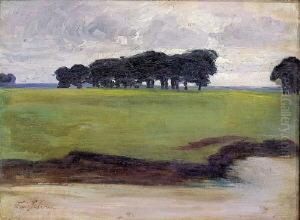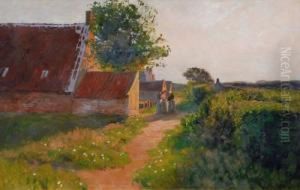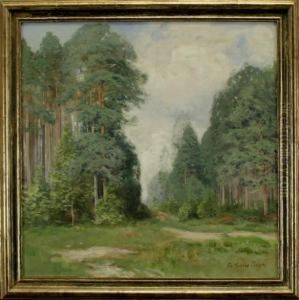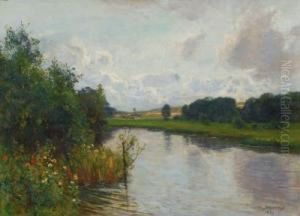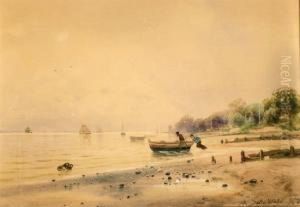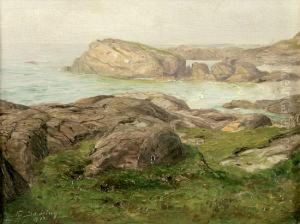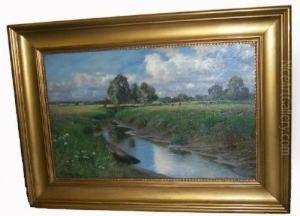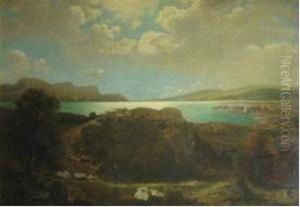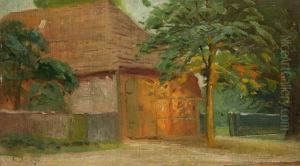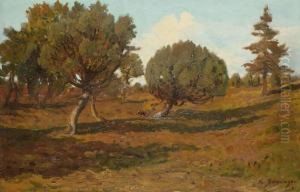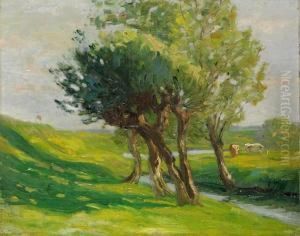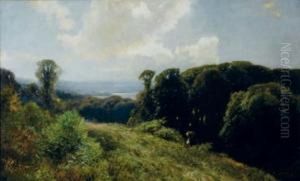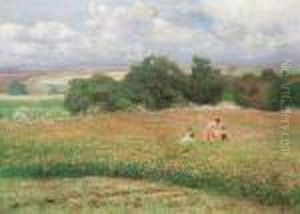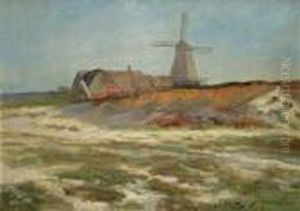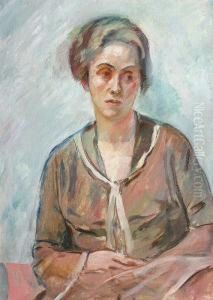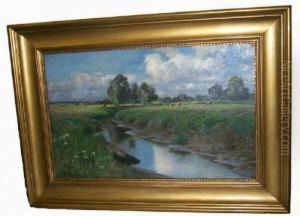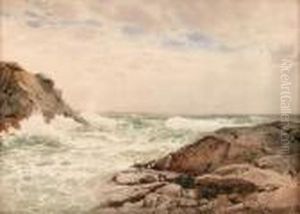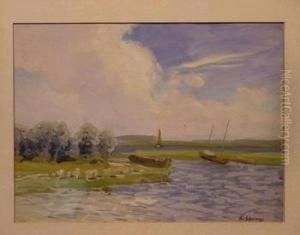Friedrich Wilhelm Schwinge Paintings
Friedrich Wilhelm Schwinge was a German landscape painter, known for his evocative depictions of the North German countryside and coastal scenes. Born on November 12, 1852, in Düsseldorf, Germany, he was part of a generation of artists that was strongly influenced by the Düsseldorf school of painting, a group that emphasized naturalistic and detailed landscapes.
Schwinge's artistic journey began at the Düsseldorf Academy, where he studied under the guidance of notable painters such as Eugen Dücker. Influenced by the romantic traditions of the time, Schwinge developed a style characterized by a harmonious palette and a keen observation of light effects in nature. He often depicted the marshlands and the moors of Northern Germany, capturing the unique atmosphere of these regions with a sensitive and refined approach to color and composition.
Throughout his career, Schwinge remained dedicated to landscape painting, exploring the varying moods and times of day in his works. He was adept at creating scenes that ranged from the tranquil to the dramatic, often highlighting the interplay between sky and water. His works were well-received, and he participated in several exhibitions, gaining recognition among art critics and collectors.
Friedrich Wilhelm Schwinge's contribution to German landscape painting was significant in that he continued and expanded upon the traditions of the Düsseldorf school, while also bringing his own unique perspective to the genre. His paintings are celebrated for their poetic quality and their ability to transport viewers to the serene and often sublime natural settings he portrayed.
Sadly, Schwinge's life was cut short when he passed away on February 19, 1913, in Hamburg, Germany. Despite his relatively brief career, Schwinge left behind a body of work that continues to be appreciated for its artistic merit and its depiction of the North German landscape. His paintings can be found in various museums and private collections, serving as a testament to his skill and passion for the natural world.
